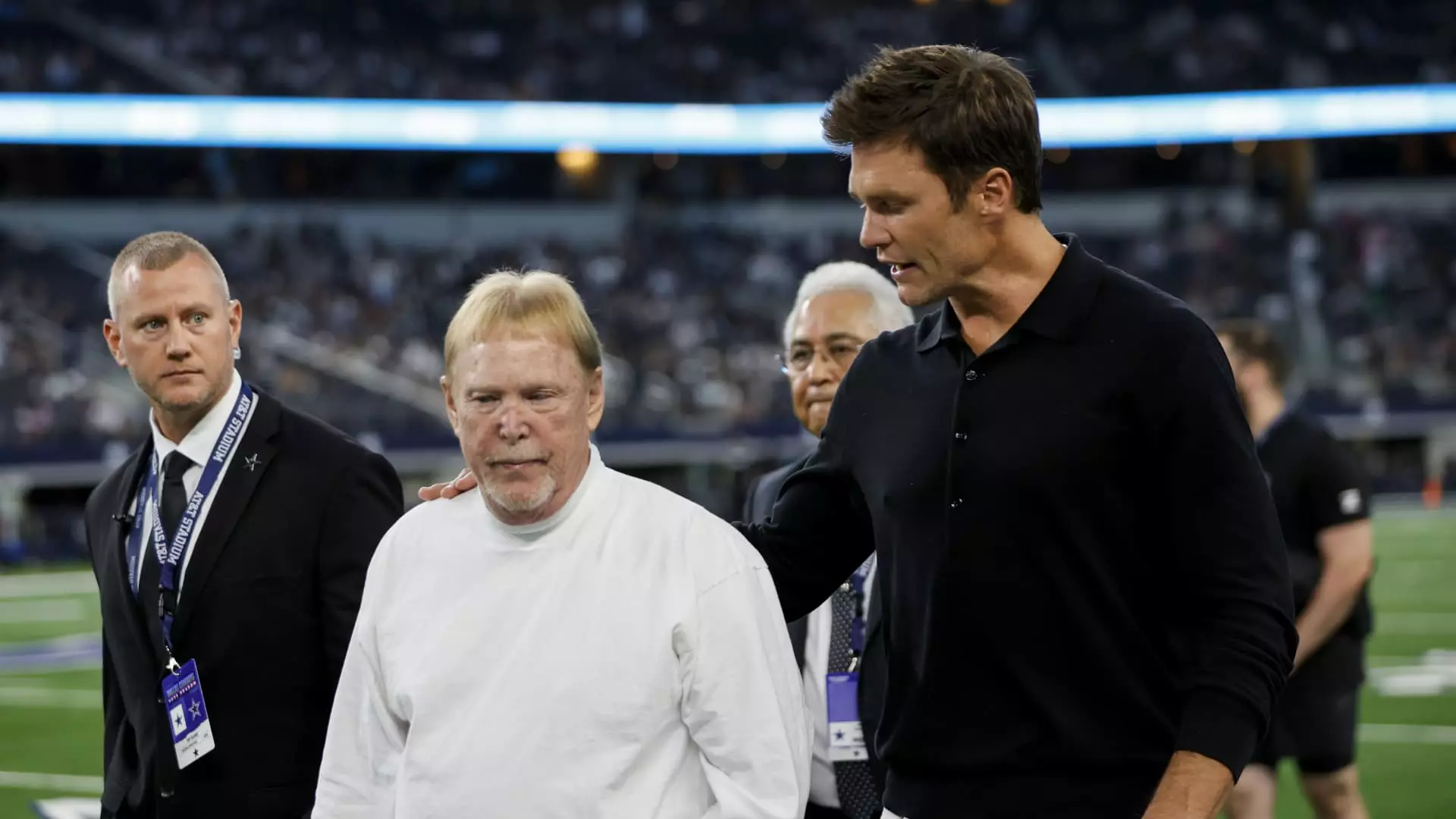In a landmark decision, the National Football League (NFL) has embraced the legendary Tom Brady as a minority owner of the Las Vegas Raiders. This move not only signifies Brady’s transition from player to owner but also raises questions about the evolving landscape of NFL ownership and the implications of celebrity involvement in professional sports franchises.
A New Chapter in Brady’s Career
Tom Brady’s acquisition of a 10% stake in the Raiders, alongside business partner Tom Wagner, marks a significant juncture in his post-playing career. With a collective investment estimated at approximately $220 million based on a $3.5 billion valuation of the franchise, Brady’s foray into ownership is emblematic of the increasing intersection between sports and business. The NFL, historically dominated by team owners who are primarily financiers or retired athletes through family legacies, has now opened its gates to prominent sports figures, changing the traditional model of ownership.
Brady’s journey to ownership commenced in May 2023, reflecting a keen interest in diversifying his portfolio post-retirement. This ambition was initially met with hesitation from some current team owners, who considered his bid overly discounted. The eventual unanimous approval indicates a consensus on the growing significance of celebrity ownership within the league. As the highest-profile player in NFL history and a cultural icon, Brady’s presence is likely to resonate with fans and contribute to the Raiders’ brand equity.
The valuation of the Raiders plays a critical role in understanding the motivations behind Brady’s stake acquisition.
Reportedly valued at $3.5 billion, this figure situates the Raiders as one of the league’s most valuable franchises, a remarkable turnaround since their relocation from Oakland in 2020. The Raiders ranked among the lower echelon of team valuations prior to this move. Their new stadium, Allegiant Stadium, has augmented revenue streams significantly, generating $780 million in 2023—placing them as the league’s third-highest earner.
However, a closer look at the financial intricacies reveals that Brady and Wagner’s purchase took place at a significant discount compared to CNBC’s official valuation of the franchise at $7.8 billion. While a typical discount for limited partners ranges from 20% to 25%, the offered rate exceeds 50%, prompting speculation about the underlying factors that contributed to such a decision. This discrepancy could suggest a mutual understanding among owners regarding the future growth potential of the Raiders since their relocation, or it could be indicative of Brady’s allure as a strategic brand booster for the franchise.
Transitioning into ownership does not come without its set of challenges, particularly for an iconic athlete like Brady. Emergent restrictions imposed by the NFL will shape his involvement with the team. Though he retains broadcasting rights for game commentary, he is expressly prohibited from participating in certain operational aspects, such as production meetings or having direct access to team resources. This regulatory framework underscores the league’s attempts to maintain competitive integrity while integrating high-profile celebrities into team ownership.
Additionally, the NFL’s governing protocols against public criticism of officials or other clubs serve as a reminder of the responsibilities that accompany ownership. Brady, as a former player well-versed in the dynamics of the sport, must navigate these limitations, highlighting a nuanced balance between promotional endeavors and adherence to league governance.
The Broader Implications for the NFL
Brady’s acquisition is notable not only for the individual story it represents but also for the broader implications it holds for the NFL landscape. The inclusion of former players into ownership roles introduces a new paradigm where those with firsthand experience of the league gain influence in its business decisions. This trend may pave the way for other former athletes to seek ownership stakes in franchises, enhancing the representation of players amongst decision-makers.
Moreover, as Brady has previously invested in other sports organizations, notably as a minority owner of the WNBA’s Las Vegas Aces, it begs the question of how cross-league ownership relationships could evolve. Will we see collaborations and synergy between franchises across different sports, enriching the communities they serve?
Tom Brady’s entry into the ranks of NFL ownership not only highlights his evolution as a significant sports figure beyond his playing days but also raises thought-provoking questions about the future of the league. As the dynamics of sports ownership continue to shift, the influence of athletes in these capacities promises to reshape the NFL’s identity, for better or worse.

